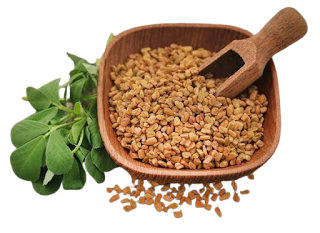Aloe vera is a succulent plant that has been used for centuries for its medicinal properties. Its gel and juice are packed with nutrients and bioactive compounds that offer a range of health benefits. In this article, we’ll explore the health benefits, common uses, and potential side effects of aloe vera.
Health Benefits of Aloe Vera
Aids Digestion
- Aloe vera juice can soothe the digestive tract, promoting healthy digestion and relieving constipation. It helps maintain a balance in the gut flora, which is crucial for overall digestive health.
Boosts Immunity
- Rich in vitamins, minerals, and antioxidants, aloe vera helps strengthen the immune system. The plant's bioactive compounds, such as polysaccharides, have been shown to stimulate the immune response.
Supports Skin Health
- Aloe vera gel is widely known for its skin benefits. It can soothe sunburns, reduce acne, and moisturize dry skin. Its anti-inflammatory properties help in healing wounds and reducing skin irritation.
Hydrates the Body
- Aloe vera juice is an excellent way to stay hydrated. Its high water content helps maintain hydration levels, which is essential for overall health and well-being.
Detoxifies Naturally
- Aloe vera juice aids in detoxifying the body by supporting liver function and helping to remove toxins. This natural detoxification process can improve overall health and energy levels.
Reduces Inflammation
- The anti-inflammatory compounds in aloe vera, such as salicylic acid, help reduce inflammation in the body. This can be beneficial for conditions like arthritis and other inflammatory disorders.
Common Uses of Aloe Vera
Skin Care
- Aloe vera gel is used in various skincare products due to its moisturizing and healing properties. It's commonly applied to burns, cuts, and dry skin.
Hair Care
- Aloe vera can be used as a natural conditioner to nourish the scalp and hair. It helps reduce dandruff, promote hair growth, and add shine to hair.
Oral Health
- Aloe vera is included in some toothpaste and mouthwashes for its ability to reduce plaque, soothe gums, and improve overall oral hygiene.
Digestive Health
- Drinking aloe vera juice is a popular remedy for improving digestion and relieving constipation. It helps balance the pH of the stomach and reduces acid reflux.
Weight Management
- Aloe vera juice is sometimes used in weight management programs for its detoxifying properties and ability to improve metabolism.
Immune Support
- Consuming aloe vera juice can help boost the immune system, thanks to its rich nutrient profile and bioactive compounds.
Potential Side Effects of Aloe Vera
Digestive Issues
- While aloe vera can aid digestion, excessive consumption of aloe vera juice can lead to digestive issues like cramping, diarrhea, and electrolyte imbalances. It is important to consume it in moderation.
Allergic Reactions
- Some individuals may be allergic to aloe vera. Topical application can cause skin irritation or rash in sensitive individuals. It's advisable to do a patch test before using it extensively on the skin.
Blood Sugar Levels
- Aloe vera may lower blood sugar levels. People with diabetes or those taking medication to control blood sugar should consult their doctor before consuming aloe vera.
Interactions with Medications
- Aloe vera can interact with certain medications, such as laxatives, diuretics, and diabetes medications. Always consult a healthcare professional before incorporating aloe vera into your routine if you are on medication.
Liver Health
- There have been rare reports of liver toxicity associated with long-term use of aloe vera supplements. It’s important to follow recommended dosages and consult with a healthcare provider if you plan to use it regularly.
Conclusion
Aloe vera is a versatile plant with numerous health benefits, from aiding digestion and boosting immunity to supporting skin and hair health. However, it's important to use it in moderation and be aware of potential side effects. Always consult with a healthcare professional before starting any new health regimen, especially if you have underlying health conditions or are on medication. With mindful use, aloe vera can be a valuable addition to your wellness routine.


.png)





.png)







